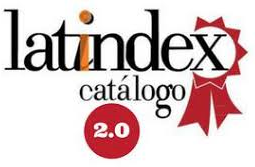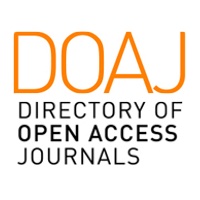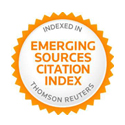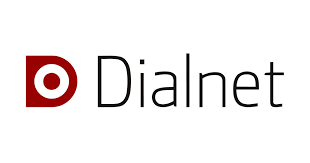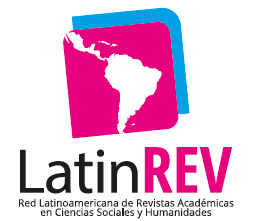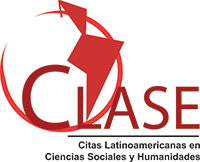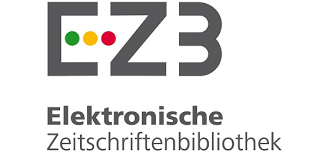The militant humour of La Libertad Avanza and Unión por la Patria in Argentina's 2023 election campaign
DOI:
https://doi.org/10.26422/aucom.2026.1501.fraKeywords:
political humor, hypermedia humor, electoral campaigns, political communication, militancyAbstract
This article describes the ways in which hypermedia political humour produced by Internet users who supported La Libertad Avanza (LLA) and Unión por la Patria (UP) operated in the 2023 Argentinean election campaign. Studies dedicated to this type of humour have shown that it plays a relevant role in contemporary political communication: it spreads more than serious publications, achieves a high degree of recall and introduces more citizens to the political debate, reinforcing party identifications. At the same time, some segments of the population tend to access the news seeking to understand the jokes in memes, and those same jokes can generate twists of meaning that ridicule elaborate campaign strategies.
From a socio-semiotics of hypermediatisation, the article provides a panoramic description of the main ways in which militant political humour operated and the differences that occurred in the support of the two most voted political alliances in 2023. First, it describes the production of professional political humour accounts and the responses they received from their followers. Then, it focuses on an expanding mode of risibility that entertains the candidate himself, which was articulated with the production of fandom. From this observation, it analyses how this particular alliance served La Libertad Avanza to protect Milei from a lacerating attack in the first debate.
All these procedures reveal a sophisticated knowledge of militancy about the firepower of humour and hypermedia circulation.
Downloads
References
Canedo, N. (2024). Memes y fan art políticos. Imágenes en la conversación electoral argentina de 2023. Inmediaciones de la Comunicación, 19(2). https://doi.org/10.18861/ic.2024.19.2.3763
Canedo, N. (7 de octubre de 2023). Del fanfic al porno político: crónica del affaire ficcional Milei x Bregman. elDiarioAr. https://www.eldiarioar.com/politica/fanfic-porno-politico-cronica-affaire-ficcional-milei-x-bregman_1_10578516.html
Carlón, M. (2021). El poder del humor en una sociedad hipermediatizada. Recursos humorísticos y saltos hipermediáticos. En M. Burdarkt, D. Fraticelli y T. Várnagy (comps.). Arruinando chistes. Panorama de los estudios del humor y lo cómico (pp.129-150). Teseo.
Carlón, M. (2020). Circulación del sentido y construcción de colectivos en una sociedad hipermediatizada. UNSL. http://www.neu.unsl.edu.ar/wp-content/uploads/2020/08/Circulacio%CC%81n-del-sentido.pdf
Centocchi, C. (2009). Semblantes de la publicidad posmoderna. Pensar la publicidad, 3, 15-30. oai:revistas.ucm.es:article/16174
D’Adamo O. y García B. (2013). Arquitectura del relato político. Storytelling al servicio de la comunicación política. En I. Crespo y J. del Rey (eds.), Comunicación Política y Campañas Electorales en América Latina (pp.55-68). Biblos.
Dader, J. (2003). Ciberdemocracia y comunicación política virtual: el futuro de la ciudadanía electrónica tras la era de la televisión. En Comunicación política en televisión y nuevos medios (pp. 48-67). Ariel.
Davis, J., Love, T., Avis, J., y Killen, G. (2018). Seriously funny: The political work of humor on social media. New media & Society, 20, 45-57. https://journals.sagepub.com/doi/abs/10.1177/1461444818762602?journalCode=nmsa
Dumm, Z. (2022). Informe final de proyectos de investigación (PICYDT UNM/2018). Universidad Nacional de Moreno.
Fraticelli, D.; De Mattei, J.; Palmeiro, E.; Pereyra, C.; Vega, F. (2025). Las cuentas de humor en campaña. Un estudio sobre sus operaciones semiótica en las elecciones argentinas de 2023. Dixit, 39. https://revistas.ucu.edu.uy/index.php/revistadixit/article/view/4480
Fraticelli, D. (2024). Dime de qué ríes y te diré quién eres. El Humor Hipermediático en los procesos de identificación colectiva. Signo y seña, 44, 4-25. http://revistascientificas.filo.uba.ar/index.php/sys/article/view/12920/12774
Fraticelli, D. (2023). El Humor Hipermediático. La nueva era de la mediatización reidera. Teseo. https://www.teseopress.com/elhumorhipermediatico/
Fraticelli, D. (2021). Enunciación y humor en las redes (o cómo estudiar memes sin perder el chiste). La Trama de la Comunicación, 26(2), 115-129. https://latrama.unr.edu.ar/index.php/trama/article/view/779/514
Fraticelli, Damian; (2025): Publicaciones de humor político de cuentas de X, Instagram, Facebook, YouTube y TikTok durante la campaña electoral argentina de 2023. Consejo Nacional de Investigaciones Científicas y Técnicas. (dataset). http://hdl.handle.net/11336/256383
Freeom, D. y Karpf, D. (2014). Of big birds and bayonets: hybrid Twitter interactivity in the 2012 Presidential debates. Information, Communication & Society, 18(4), 390-406. https://doi.org/10.1080/1369118X.2014.952659
Freud, S. (2006). El chiste y su relación con el inconsciente. Obras completas. Tomo VIII. Amorrortu.
Jenkins, H., Ford, S. y Green, J. (2015). Cultura transmedia. La creación de contenido y valor en una cultura en red. Gedisa.
Luhmann, N. (1998). Sistemas sociales. Lineamientos para una teoría general. Anthropos.
Maradei, A. (2017). Humor e violência no Tuíter durante os protestos pelo impeachment de Dilma Rousseff. Estudos em Comunicação, 26(2), 137-148. http://ojs.labcom-ifp.ubi.pt/index.php/ec/article/view/461
Milei, J. (18 de febrero de 2019). Javier Milei: el General Ancap [Archivo de Video]. YouTube. https://www.youtube.com/watch?v=ohfhaoJ946s&t=1s
Peirce, C. (1974). La ciencia de la semiótica. Nueva Visión.
Schere, J. (2018). El par cómico. Un estudio sobre la persuasión cómica en la comedia temprana de Aristófanes. Santiago Arcos Editor.
Steimberg, O. (1993) Semiótica de los medios masivos. El pasaje a los medios de los géneros populares. Atuel.
Suárez, B. (2020). Dispositivo enunciativo del humor político. Variantes e invariantes en la configuración de lo decible y lo visible. Atlante. Revue d´Etudes Romanes, 13. https://doi.org/10.4000/atlante.1010
Traversa, O. (2009). Notas acerca de lo reidero en las tapas de revistas. Figuraciones. Teoría y Crítica de Artes, 5, 49-63. http://repositorio.una.edu.ar/handle/56777/523
Verón, E. (2013). La semiosis social, 2: Ideas, momentos, interpretantes. Paidós.
Verón, E. (2011). El canto de las sirenas. En Papeles en el tiempo (pp. 74-76). Paidós.
Verón, E. (2001). El living y sus dobles. Arquitecturas de la pantalla chica. En El cuerpo de las imágenes, pp. 67-88. Gedisa.
Verón, Eliseo. (1987a). La semiosis social. Gedisa.
Verón, Eliseo. (1987b). La palabra adversativa: Observaciones sobre la enunciación política. En L. Arfuch, et al., El discurso político: Lenguajes y acontecimientos, (pp. 19-26). Hachette.
Downloads
Published
Issue
Section
License
Copyright (c) 2025 Damián Fraticelli

This work is licensed under a Creative Commons Attribution-NonCommercial-ShareAlike 4.0 International License.
The authors retain the copyright and guarantee the journal the right to be the first publication of the work. In case that a translation of the article already published in Austral Comunicación can be published in another journal, it is requested to record the original publication in the translated version.
The license used is CC BY-NC-SA, which allows sharing (copying and redistributing the material in any medium and format) and adapting (remixing, transforming and building on the material) under the following terms: attribution (acknowledge authorship) and non-commercial (the material cannot be used for commercial purposes). Update: February 1, 2022.
Austral Comunicación allows the author (s) to retain the publication rights without restrictions.






